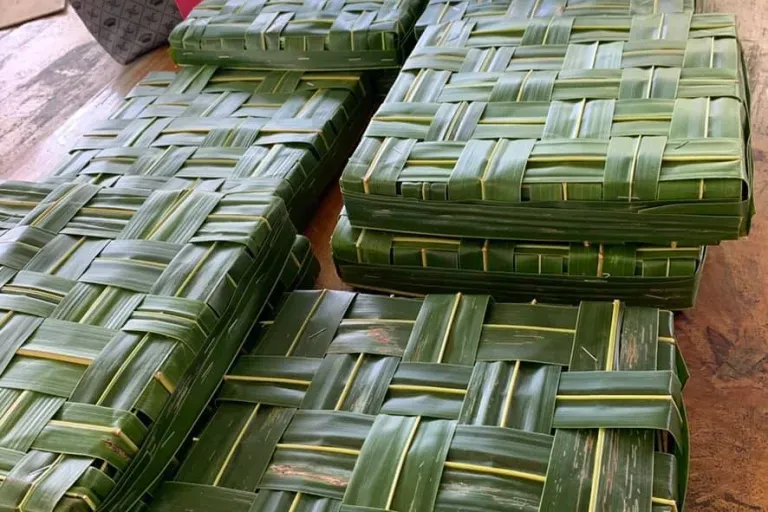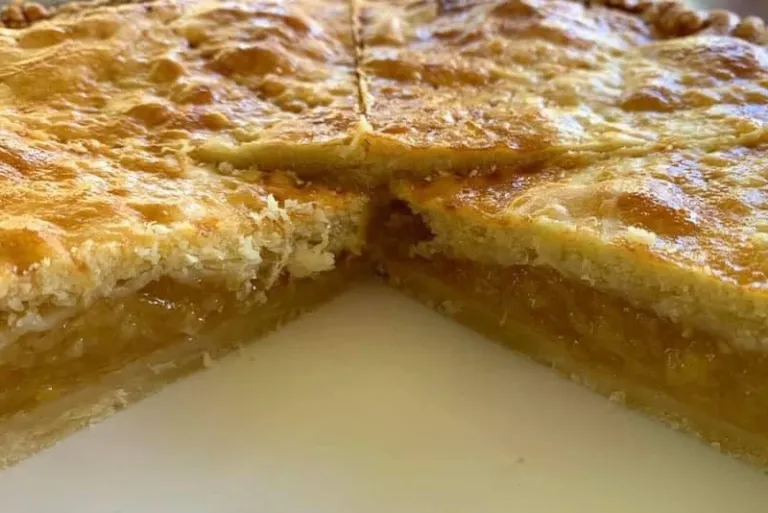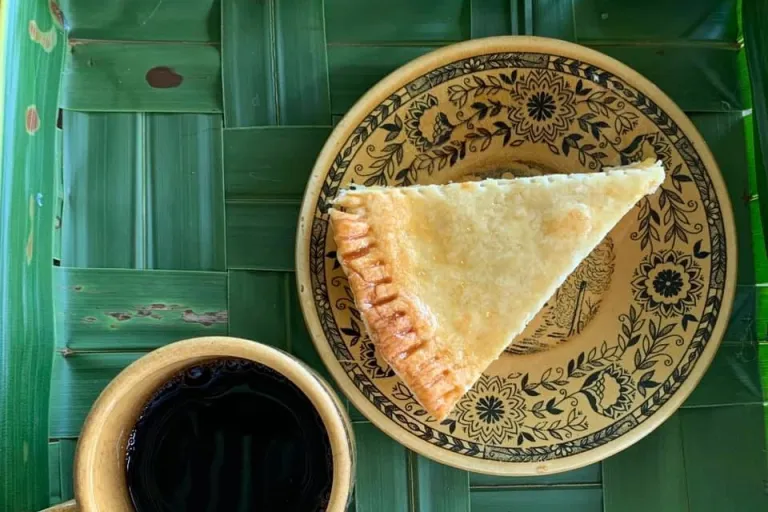The promise of new flavours beckons from Banawe.
Coconut Leaves as Food Packaging Is a Thing, and This Bicolana Shows How It’s Done

To say that we can survive off of coconut trees might be overdoing it, but the truth is that it might not actually be far from reality, what with the many uses these crops have. Coconut fruit alone is excellent for cooking, coconut tree trunk for housing and construction, coconut root for medicines, and coconut leaves for — believe it or not — food presentation or packaging.
We’re not talking about the usual rice wrapping, dish plating, and even barbecue skewing common in most parts of the Philippines. As this thriving food and beverage business in Irosin, Sorsogon proves, one can also use these coconut leaves, or simply langkoy, for packaging homemade Filipino delicacies such as buko pie.
Also read: Philippine Souvenirs: 21 Trendy Gifts and Tokens to Take Home With You
Buko pie in a langkoy box

According to Titania’s Cater owner Claire Ayalin Ng via ABS-CBN News, she had planned on selling buko pie and wanted a gimmick of her own to help the product stand out. Given the abundance of coconut trees in her locale, Ng resorted to a langkoy box food packaging that is not only presentable, but more importantly, sustainable.
“Matagal na akong kino-convince ng mga friends ko na gumawa ng buko pie. Sabi ng papa ko ‘gumawa ka rin ng ganyan’ kasi andami nating niyog nasasayang lang,” she also told Bicol.PH in an interview. Ng took inspiration from the palaspas or woven palm leaves often used during Holy Week, and tried making containers from them on her own. Currently, a box of buko pie at Titania’s Cater costs ₱350.
Ng also uses eco-friendly packaging for her other delicacies. Among them are the Bicol-renowned nilupak or mashed cassava (also sweet potato) mixed with sugar and coconut milk, which she wraps with banana leaves. Along with the buko pie in the langkoy box, they make for great eco-friendly and affordable gifts for your loved ones all year round.
Also read: What’s It Like to Start a ‘Quarantine Business’ for Filipinos?

Other similar businesses and stunts have also been pulled off by other Filipino entrepreneurs during the lockdown. In the middle of 2020, The BrickOven Café in Pila, Laguna introduced sustainable pizza packaging. Meanwhile, you’ll now find eco-friendly packaging bundles being sold at The Good Trade PH and other local online stores.
All images credited to Titania’s Cater.
Published at
About Author
Joser Ferreras
Subscribe our Newsletter
Get our weekly tips and travel news!
Recommended Articles
10 Best Banawe Restaurants for a Mouthwatering Food Trip in QC 10 Best Mountain Cafes in the Philippines for Your Peak Coffee Experience Coffee date on the mountains, anyone?
10 Instagrammable Laguna Restaurants and Cafes You’ll Love Elevate your Insta-game at these Laguna spots.
11.11 Seat Sales to Fly to Your Revenge Travel Destination The savings are beyond comparison!
12 Must-Visit Eastwood Restaurants in 2023 Tried and tested dining spots for every palate.
Latest Articles
Every Disneyland Park You Can Visit Worldwide Where Disney magic lives
Guide to Palawan Delicacies: 9 Authentic Must-Eats and Pasalubong Taste your way to Palawan!
Canada Expands Visa-Free Travel to the Philippines: Here’s What You Need to Know Filipinos can now travel to Canada visa-free!
First American Pope Elected: Meet Pope Leo XIV Historic Vatican moment unfolds
Limasawa Island: Beaches, History, and Hidden Gems Where history and island life meet

